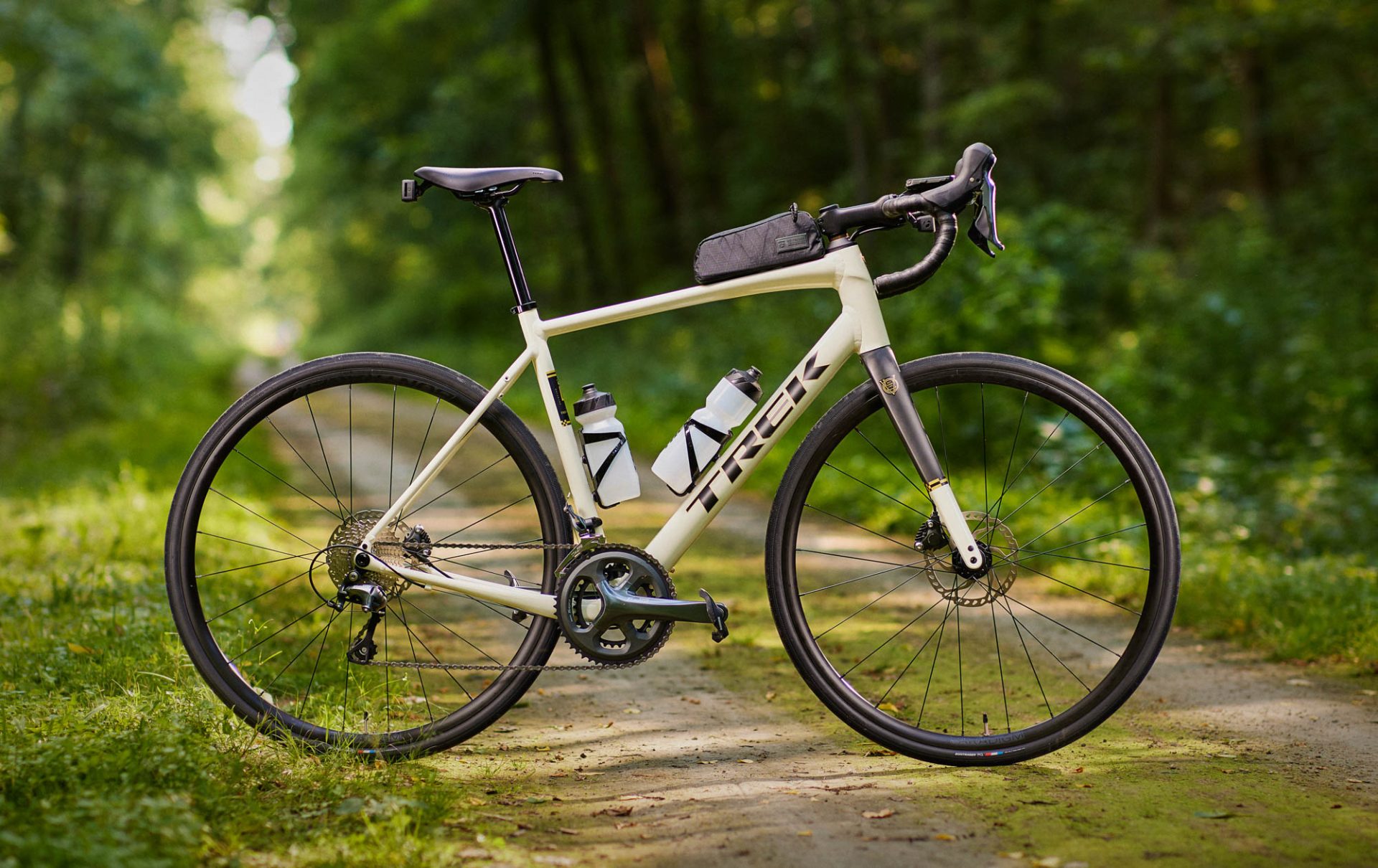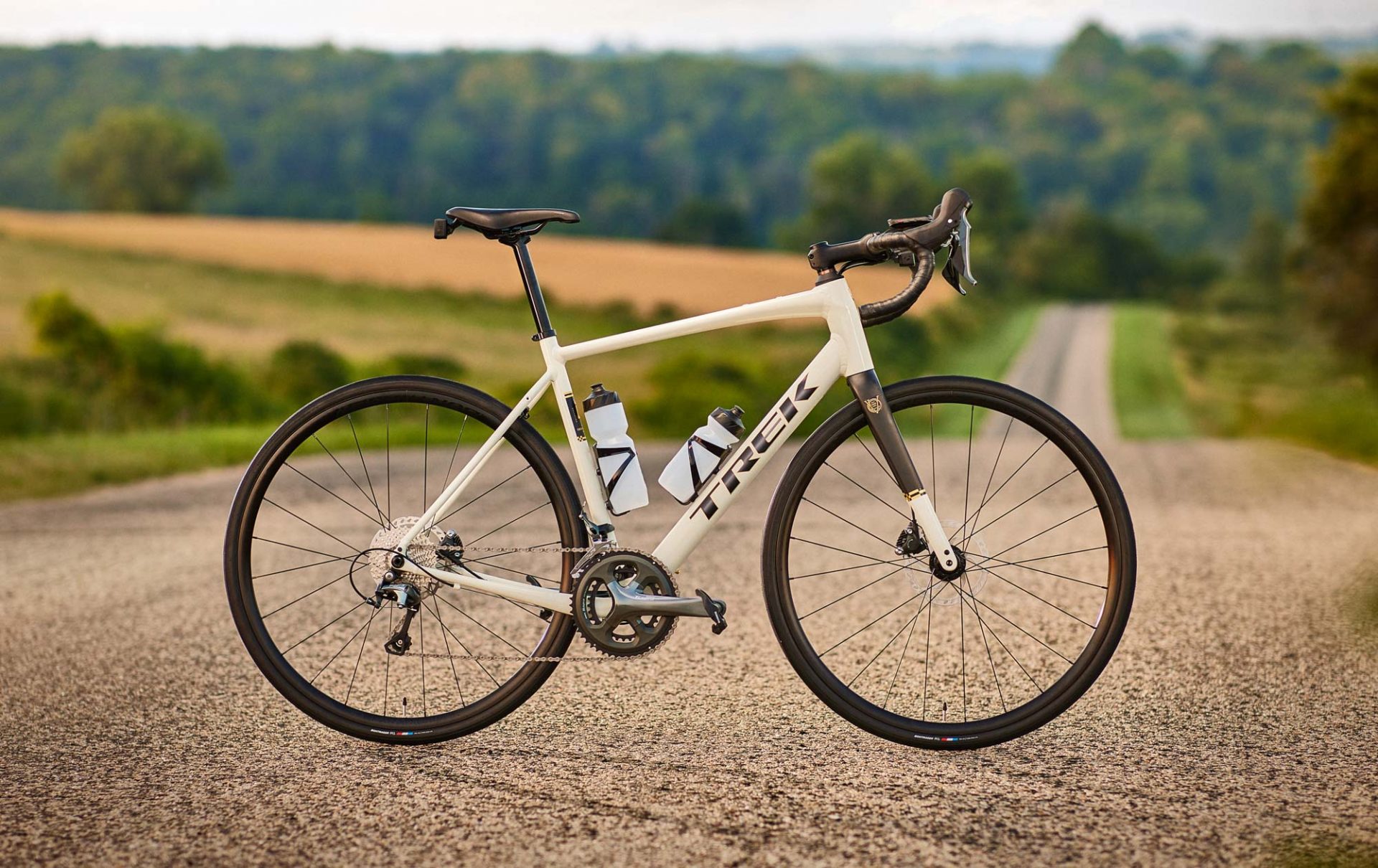Released in 2021, the Domane AL Disc was Trek’s revised vision for what an entry-level aluminium road bike should be. It offered a welcoming and fairly upright geometry, a solid parts spec, and enough tyre clearance to serve double-duty for gravel riding, too. And despite its hefty weight, I gave it a rather rave review after having found it to be a wonderfully versatile and capable dropbar bike.
Fast forward to today and Trek has once again overhauled its best-selling road platform. Now in its fourth generation, this latest Domane AL looks to keep much of what I liked about its predecessor while introducing a few modern features (some good, some perhaps less so).
This is a bike we’ll be reviewing as soon as stock lands. For now, here are the basic details.
Staying the same
The new Domane AL continues as Trek’s entry-level road-turned-all-road option. The frame still uses the company’s base-level aluminium with simpler shaping and tube butting when compared with Trek’s more premium ALR-level frames.
Thankfully Trek has managed to massage a little weight out of the frame and by equipping a full carbon fibre fork. The Domane Al Disc 4 I reviewed back in 2021 weighed 10.45 kg without pedals, while this new version with an equivalent Shimano Tiagra specification should sit closer 10.2 kg.
Also unchanged is the handling and fit geometry across the seven available sizes. I’m a fan of Trek’s endurance geometry with the comparatively short reaches and tall stack heights providing an accessible fitting bike to most.

Trek will likely sell a number of the Domane AL to people seeking a fuss-free winter bike. Here, front and rear fender mounts, plus rear rack compatibility, remain. Mounting points for a top tube bag are still present, too.
Meanwhile, Trek has added to the already extremely generous tyre clearance. Officially, there’s room for 38 mm tyres front and rear (35 mm with fenders).

Trek going UDH on the road?
Whether it’s from handmade bike shows, tradeshows, or on the Geek Warning podcast, it feels like we’re constantly pointing out new gravel and road bikes being released with SRAM’s Universal Derailleur Hanger (UDH). Now we can add Trek to the list, with the Domane AL being the first dropbar bike from the American company to adopt what was until recently a mountain bike feature.
As we now know, UDH was introduced to mountain bikes first as a friendly standardised solution, and then as a new method of mounting the rear derailleur. The writing is already on the wall for why road bikes are being equipped with UDH, and with Trek now adopting the standard, it’s clear something is cooking in SRAM’s kitchen of disruption.
For now, the benefit to the Domane AL using a UDH means easier access to a spare derailleur hanger wherever you are.
Headset cable routing
Ok, so this is the part I’m less stoked about.
The new Domane AL has its brake hoses and gear cables routed through the headset. Admittedly, it looks clean and will surely help Trek to sell more of these. The other good news is that Trek has kept all of the hoses/cables external of the handlebar and stem, so swapping those components is no more difficult than an old bike.
The downside is that it will inevitably come with a larger service bill after a good amount of fun has been had – something that should be considered in the long-term cost of ownership. It’s a topic we’ve exhausted on the Geek Warning podcast, and while I’m perfectly fine with integrated cabling on higher-end bikes with wireless shifting and a customer that can afford increased service costs, it’s a much harder pill to swallow at this entry level.

At this price point, you have mechanical shifting to contend with that benefits from shorter and smoother cable paths. You also typically have customers who are more reactive rather than proactive when it comes to regular servicing.
While it may not be as aesthetically pleasing, my preference at this price point is for more traditional internal cable routing that runs through the frame but bypasses the headset. Specialized’s new Allez Sport offers such an example.
Specs and pricing
Trek is offering the Domane AL at three price points. However, not all models are available in all regions.
Regardless of price, all of the Domane Al bikes feature the same frame and full carbon fork with a tapered steerer. Likewise, all models feature a new shorter reach and subtly flared Bontrager Comp Alloy handlebar. All are supplied with 32 mm wide Bontrager R1 Hard-Case tyres (wire bead) on 21 mm width tubeless-ready rims.
The range starts with the Domane AL 2 at US$1,200 / €1,200 / £1,125 / AU$2,000. This base-level option features mostly Shimano Claris 2×8-speed shifting and Shimano mechanical disc brakes.
Next up is the Domane AL 4 at US$1,700 / €2,000 / £1,875 / AU$N/A. This one features Shimano Tiagra 2×10 shifting and hydraulic disc brakes.
Finally, spending US$2,000 / €2,300 / £2,150 / AU$N/A gets you the Domane AL 5. This top-tier option has Shimano’s new 105 12-speed mechanical groupset.
Indeed, entry-level bikes are far more expensive than ever. It remains to be seen whether Trek will introduce a rim brake road bike at a lower price point like what Giant and Cannondale offer. However, I suspect the likes of Trek and Specialized are probably quite happy to leave that price-focussed market to others.
What did you think of this story?

